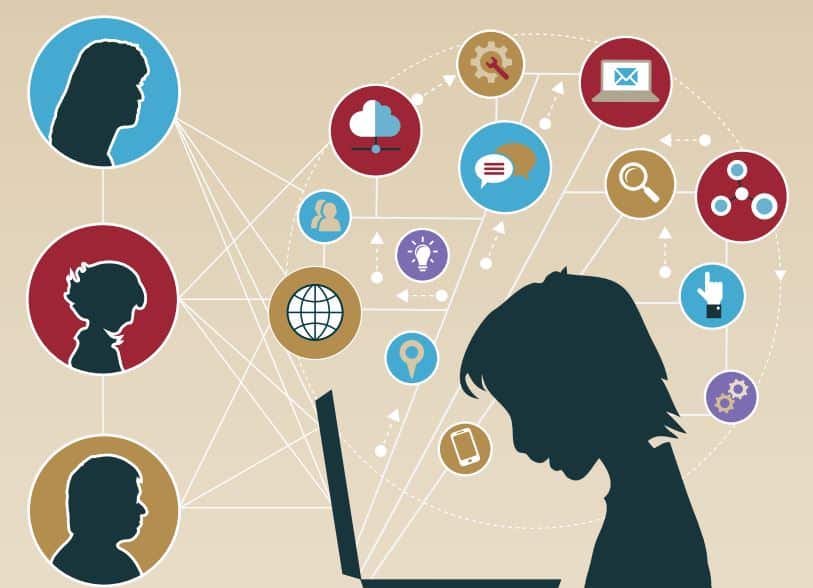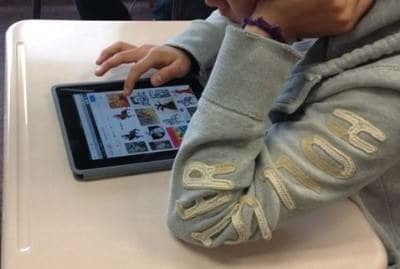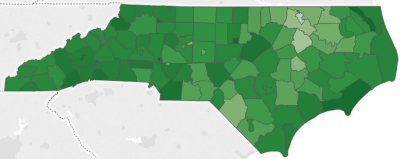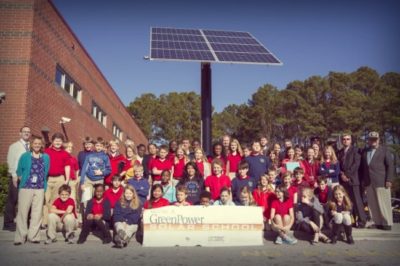Personalized learning
Personalized learning is not simply about differentiating the method or approach of instruction or about individualizing the pace of learning. Personalized learning further seeks to empower the learner to shape what, how, and when they learn, thus engaging them through their explicit and implicit choices. Authentic implementation of personalized learning requires fundamental redesign of the school structure and of the role of teachers.
The 2014 Summit utilized this definition of personalized learning:
“Personalization is necessary for educational equity. Educational equity is not simply about equal access and inputs, but ensuring that a student’s educational path, curriculum, instruction, and schedule be designed to meet her unique needs, inside and outside of school. Achieving educational equity requires meeting each child where she is and helping her achieve her potential through a wide range of resources and strategies appropriate for her learning style, abilities, and interests, as well as social, emotional, and physical situation.”
Personalized learning is a comprehensive educational model that puts students at the center and engages students when, where, and how to meet their unique needs and interests.

Technology-enabled personalized learning (TEPL)
The redesign of education and the personalization of learning can take place without technology and digital learning, but not at scale. Technology is a teaching force multiplier and a learning accelerator that can enable more efficient and effective use of learning time. This doesn’t mean computers replace teachers, or that all learning takes place online.
Rather, technology-enabled personalized learning means that technology is used to:
- Collect and analyze extensive student learning data to a degree not otherwise possible;
- Provide a differentiation of interactive, multimedia teaching and learning resources as well as student creativity and collaboration tools not otherwise possible from one teacher, book, or classroom; and
- Free teacher time from rote and administrative activities to more value-added instruction.

Five opportunities and challenges to TEPL
The Summit identified five opportunities and challenges to TEPL: data, content and curriculum, technology and architecture, R&D, and human capacity.
Data: A robust, timely and dynamic picture of student performance, preferences and needs
Personalized learning requires real-time access to meaningful data. This enables educators, students, families, and computers to translate the data into actionable information to better facilitate each student’s learning experience. Traditionally, this data is largely summative, academic test data, but there is an opportunity to further include ongoing and embedded performance data, information on student learning strategies, preferences and interests, and other non-academic information for the whole child’s needs. Having this depth of actionable information available for appropriate uses and authorized users on a regular basis requires a robust, sophisticated platform and data system.

Content and Curriculum: Recommendation engines to help dynamically match content/tasks with student needs
Recommendation engines are a priority. Such an engine makes recommendations informed by data, students, teachers, and computers and allows for choices by teachers and students. It works across various content sources, data systems, and technology platforms. It therefore requires a coordinated ecosystem of tools and standards to index, align, store and compare contextualized data — including metadata and paradata — about learning content, learners, educators, learning environments, and learning objectives that are necessary to dynamically match learners with the appropriate learning resource. It makes recommendations based on relevant connections to prior learning, personalized by reading levels, interaction, and other preferences. These systems allow for the optimal matching of learning opportunities with student needs and preferences to create the most efficient and effective learning. These systems must also enable the ongoing improvement of recommendation algorithms to support personalized learning.
Technology Architecture: Enterprise systems to access and manage data, content and communications
By definition, technology is fundamental to technology-enabled personalized learning and underpins the effective use of data and content/curriculum. Technology is necessary to bring personalized learning to scale. Ever more sophisticated tools and integrated systems are required to meet this bold approach to learning. When considered systemically, an enterprise approach to technology architecture allows for a shift from the current fragmented approach to curriculum, instruction, data, and communications to a much more integrated approach that allows access anytime, from anywhere. Schools need technology-based platforms in order to gather and analyze assessment and other data, deliver multi-modal and universally designed resources, and to dynamically match the two based on ongoing assessment of student performance and needs.
R&D: Research process to identify what works with which students in which cases across silos
The scale and scope of needed research and development is significant to translate the vision of personalized learning to effective implementation. Opportunities include cognitive and brain science research, adaptive tutorial software development, and change management and professional development best practices needed for school redesign to a student-centered model.
Technology-enabled personalized learning includes at its core the dynamic matching of students with appropriate learning resources based upon a timely and robust profile about their prior learning, performance, interests, and other needs. If a student profile can be created and the impact of various interventions with that profile can be identified, that understanding can be used to match students of similar profiles with interventions demonstrated to have impact in such cases.
Human Capacity: Instructional models and next generation professional learning
Personalized learning cannot be easily scaled without technology, but technology-enabled personalized learning will not succeed without human capacity. This includes district and school leaders, educators, parents, students, and policy-makers, who need to have a deep understanding of why this is important and what it takes to maximize the potential of personalized learning for students. Systems must be built with students, educators, and other stakeholders as part of the conversation and those individuals must understand how to inform, be informed by, and effectively use these technologies. Implementing technology-enabled personalized learning should not be viewed as something separate or on the side, but rather it should be integral to the teaching and learning and be approached in a systemic way.

Conclusion
There is growing consensus that the success of our students and our nation requires the modernization of our education system to be student-centered and personalized. Personalized learning does not require that all learning is digital, but it cannot be achieved at scale without technology. Technology-enabled personalized learning means that technology is used to identify student needs, dynamically customize a playlist of student learning experiences, support teachers, and learn what works best with which students to inform the development of ever smarter educational systems. Technology-enabled personalized learning is complex and requires many different components of the education system to work together to meet the needs of each student.
The following emerge as the priorities that can be more effectively addressed collectively rather than independently:
1. Development and adoption of technical standards for tagging content, defining and exchanging data, and easing integration of the myriad components of the TEPL ecosystem needed to support educators, recommendation engines, and related pedagogical research.
2. Data policies, agreements, and research protocols needed to scale R&D across data silos about what works with which types of students in which conditions.
3. Redefining educator roles and supporting their professional development to ensure the human capacity needed to shift from a traditional teaching model to a student-centered TEPL model.
Every day, educators are making progress to more effectively personalize learning for students; but the many students who do not yet have technology-enabled personalize learning require that the education industry accelerates the pace and realizes the potential to meet the needs of all students.
Case Study: Iredell-Statesville Schools
The Iredell-Statesville school district is comprised of 36 schools and 22,000 students just north of Charlotte, NC. The district encompasses both suburban and rural areas. This district had been awarded an i3 grant, and two years ago was awarded a 20 million dollar Race to the Top grant, becoming one of a very few districts to be awarded both grants. The Race to the Top grant is being used to develop a project called IMPACT – innovative methods for personalizing academics complemented by technology.
They believe that in order to achieve bold reform, they must move from the mindset of “improve what we have” to “innovate the system we need.” Innovation is their driving force. There are four goals inside the grant: 1) to individualize student driven learning, 2) to revolutionize instruction, 3) cultivate quality educators, and 4) make cross-cutting, data-driven decisions. The grant is about changing and reforming instruction, not about technology. They spent a year helping teachers make the shift in instruction. The model used by the district has been their key to success.
This model is learning-centered, asking five essential questions: 1) What do students need to know? 2) How will they learn it? (This is the key for blended learning). 3) How will we know they’ve learned it? 4) What will we do if they don’t learn it? and 5) What will we do if they already know it? The district had previously added instructional facilitators, coaches who help teachers with instructional support on a daily basis. To this, they added blended learning coaches to work with the instructional facilitators and teachers. The program is successful, in part, because it builds capacity. Teachers become instructional facilitators who move up to become assistant principals and then principals. The program is about delivering quality instruction for students using quality instructors and leaders who focus on instruction every day.
Here is the full report on TEPL.





